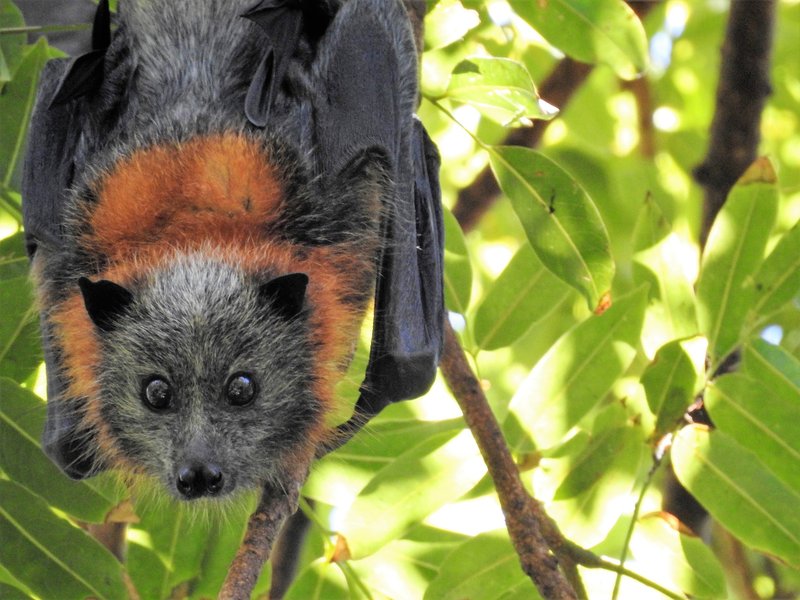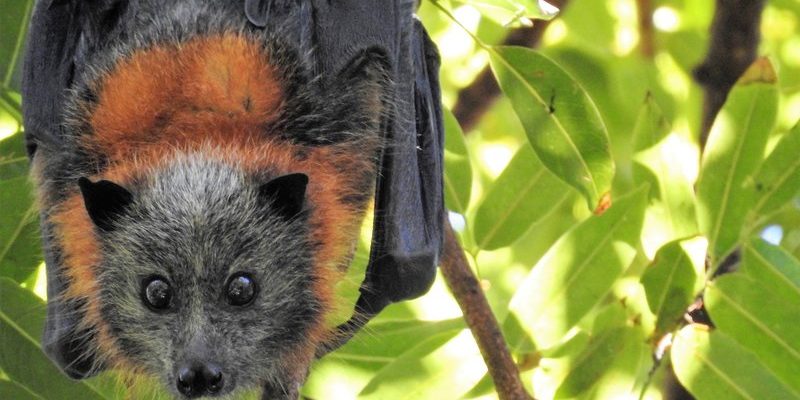
Fruit bats are unique in many ways, and they’ll likely change the way you think about bats in general. From their impressive wingspans to their quirky eating habits, there’s so much to learn! So, whether you’re a nature enthusiast or just curious about these creatures, let’s dig into the top 10 facts about fruit bats that will leave you amazed.
1. They Have Impressive Wingspans
One of the most striking things about fruit bats is their incredible wingspan. Some species, like the Giant Golden-Crowned Flying Fox, boast wingspans that can reach over six feet! Imagine that—it’s like having your own personal umbrella in the sky. These majestic wings not only help them glide gracefully but also allow them to travel long distances in search of food.
You might be wondering how they manage to fly with such large wings. Well, their large wings are designed for soaring, rather than flapping frantically. This means they can glide effortlessly for miles, which is super efficient when you’re looking for ripe fruits to munch on. Isn’t nature just amazing?
2. Their Diet is Primarily Fruit
Just like the name suggests, fruit bats primarily feast on fruit. They have a special love for bananas, mangoes, and guavas. You might say they’re nature’s own smoothie makers! When they eat, they help with the pollination process, spreading the seeds of the fruits they consume. This is a win-win situation because it helps plants grow and sustains their habitats.
Fruit bats have a unique way of eating. They often hang upside down while munching on fruit. Talk about a twist on dinner time! Their sharp senses, especially smell, help them find the ripest fruits. And here’s the thing: by dispersing seeds far and wide, they play a vital role in maintaining healthy ecosystems.
3. They are Social Creatures
If you ever see a colony of fruit bats, you’ll quickly notice they’re quite social. They often roost in large groups that can number in the thousands! It’s like an all-you-can-eat buffet party up in the trees. These social habits help them stay safe from predators, as there’s safety in numbers.
Interestingly, fruit bats also have unique social structures. They engage in grooming each other, which helps strengthen their bonds and socialize within their community. It’s a bit like a family reunion in the animal kingdom, where everyone looks out for one another.
4. They Play a Crucial Role in Ecosystems
Fruit bats aren’t just cute and social; they play a vital role in the ecosystems they inhabit. By pollinating flowers and dispersing seeds, they contribute to the growth of various plants and trees. In many tropical regions, fruit bats are essential for the survival of certain species of plants.
Imagine a world without fruit bats—many trees and plants would struggle to reproduce! They help create and maintain healthy forests, which in turn provide habitats for countless other species. It’s a beautiful cycle of life that often goes unnoticed.
5. They Have Unique Echolocation Abilities
While many bats use echolocation to navigate, fruit bats have a different approach. They rely primarily on their keen eyesight and sense of smell rather than echolocation. This is somewhat unusual for bats, but it works just fine for these fruit-loving creatures.
Their large eyes are well adapted for seeing in low light, which helps them spot ripe fruits and navigate through their surroundings. It’s like having built-in night vision goggles! This ability allows them to thrive in their nighttime foraging adventures.
6. They are Found in Many Parts of the World
Fruit bats are primarily found in tropical and subtropical regions around the world. They inhabit areas across Africa, Asia, Australia, and islands in the Pacific. Each species has adapted to its environment, with some fruit bats thriving in rainforests, while others prefer mangroves and savannas.
Because of their wide distribution, fruit bats also contribute to the diverse ecosystems wherever they are found. Their migration patterns can even influence local fruit availability and health, showing just how interconnected our planet is.
7. They Are Mostly Nocturnal
Like many bats, fruit bats are mostly nocturnal, meaning they are active at night. This helps them avoid daytime predators and the scorching sun. At dusk, you can often see them take flight, filling the evening sky with their impressive wingspans.
Nighttime is when they go out in search of food, flying from tree to tree as they munch on fruits. Their nocturnal habits also mean they have adapted to find their way around in the darkness, making them quite resourceful creatures.
8. They Can Live for Over 10 Years
Fruit bats have surprisingly long lifespans compared to many other small mammals. Some species can live over 10 years in the wild, with some even reaching up to 30 years in captivity. This is relatively unusual for bats, where the average lifespan is typically shorter.
Their longevity is a sign of their adaptability and survival skills in their natural habitats. Let’s hope they continue to thrive so that future generations can enjoy these remarkable creatures!
9. They Are Threatened by Habitat Loss
Despite their fascinating qualities, many fruit bat species face threats, primarily due to habitat loss. Urbanization, deforestation, and agricultural expansion are shrinking their homes and food sources. This is a growing concern as it directly impacts their populations.
Conservation efforts are crucial to protect these amazing creatures and their habitats. By supporting organizations dedicated to wildlife preservation, we can help ensure that fruit bats continue to thrive for many years to come.
10. They Have a Unique Social Communication
Fruit bats are known for their vocalizations, which they use to communicate with each other. You might hear a variety of sounds ranging from squawks to whistles. These vocalizations help them maintain social connections within their colonies and could even play a role in their mating rituals.
Interestingly, their sounds have different meanings. For instance, some calls might signal danger, while others could indicate the presence of food. It’s a complex form of communication that shows just how social and intelligent these creatures are.
As we wrap this up, it’s clear that fruit bats are a remarkable part of our world’s ecosystem. They’re not just cute creatures hanging upside down; they’re vital players in maintaining the health of our planet. So next time you think of bats, remember the fruit bat and its fascinating role in our natural world!

